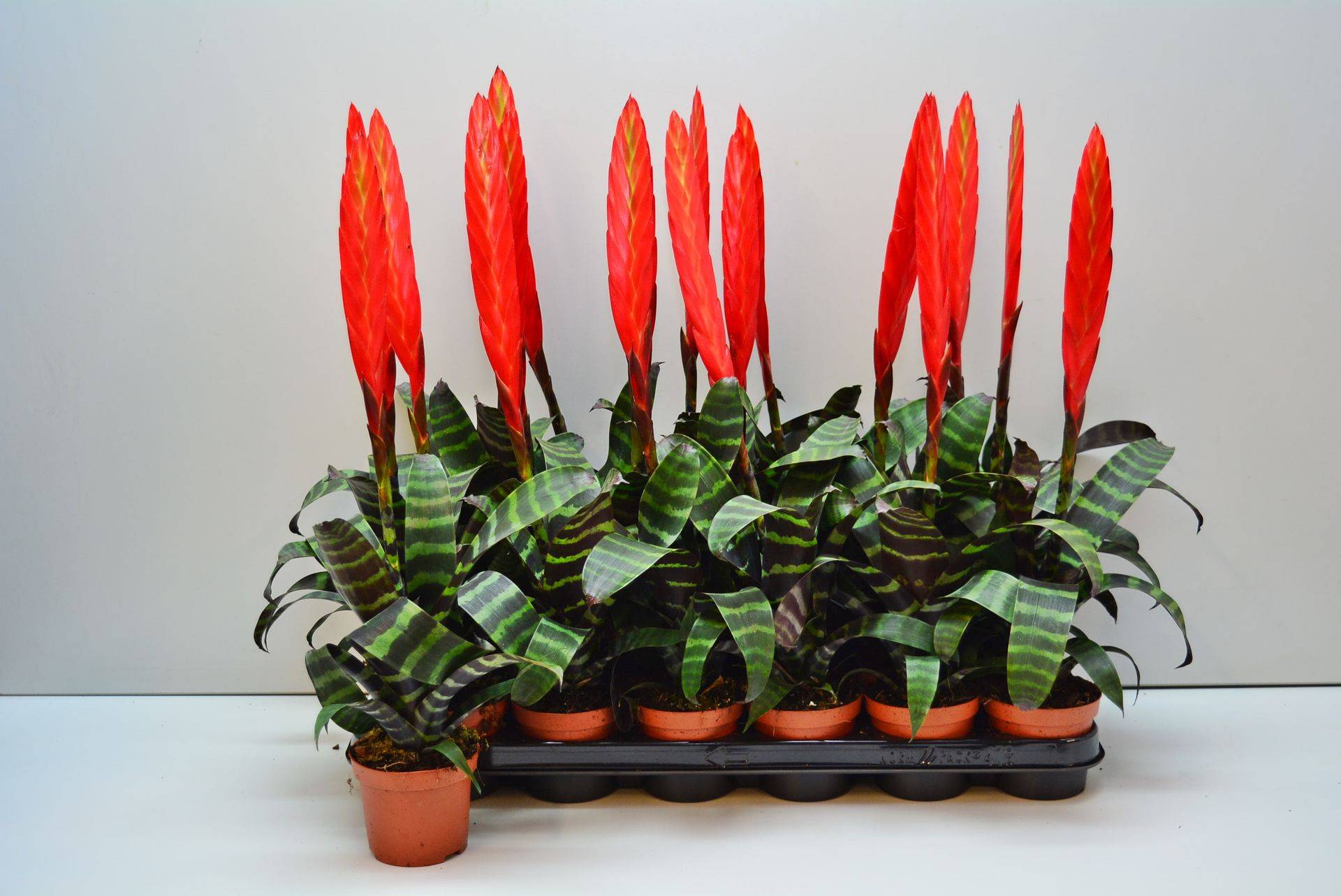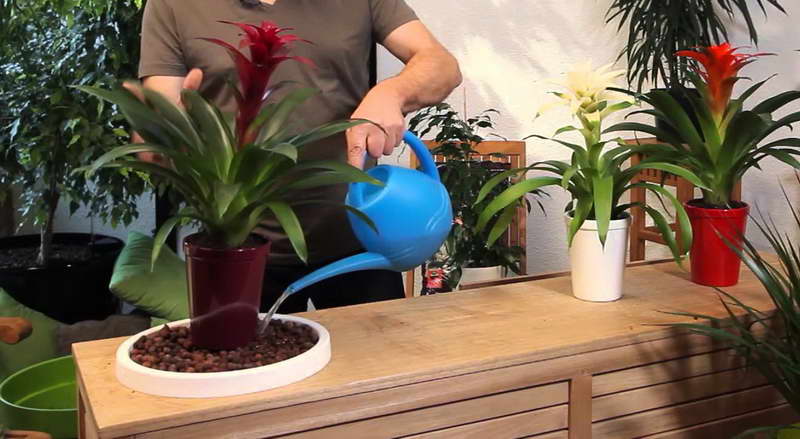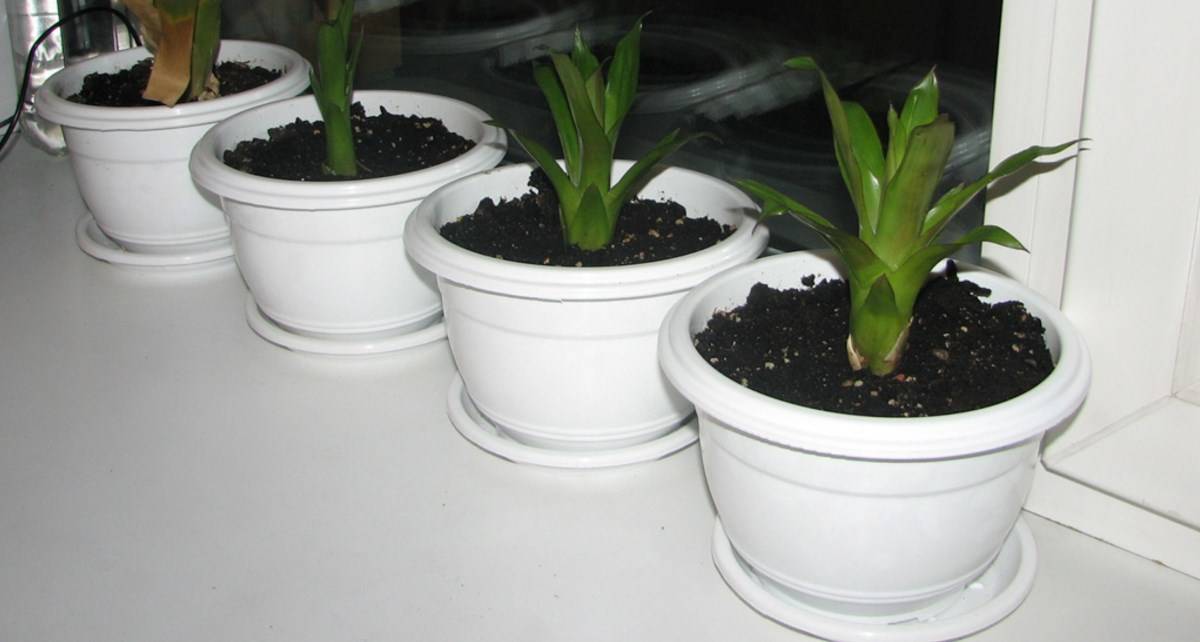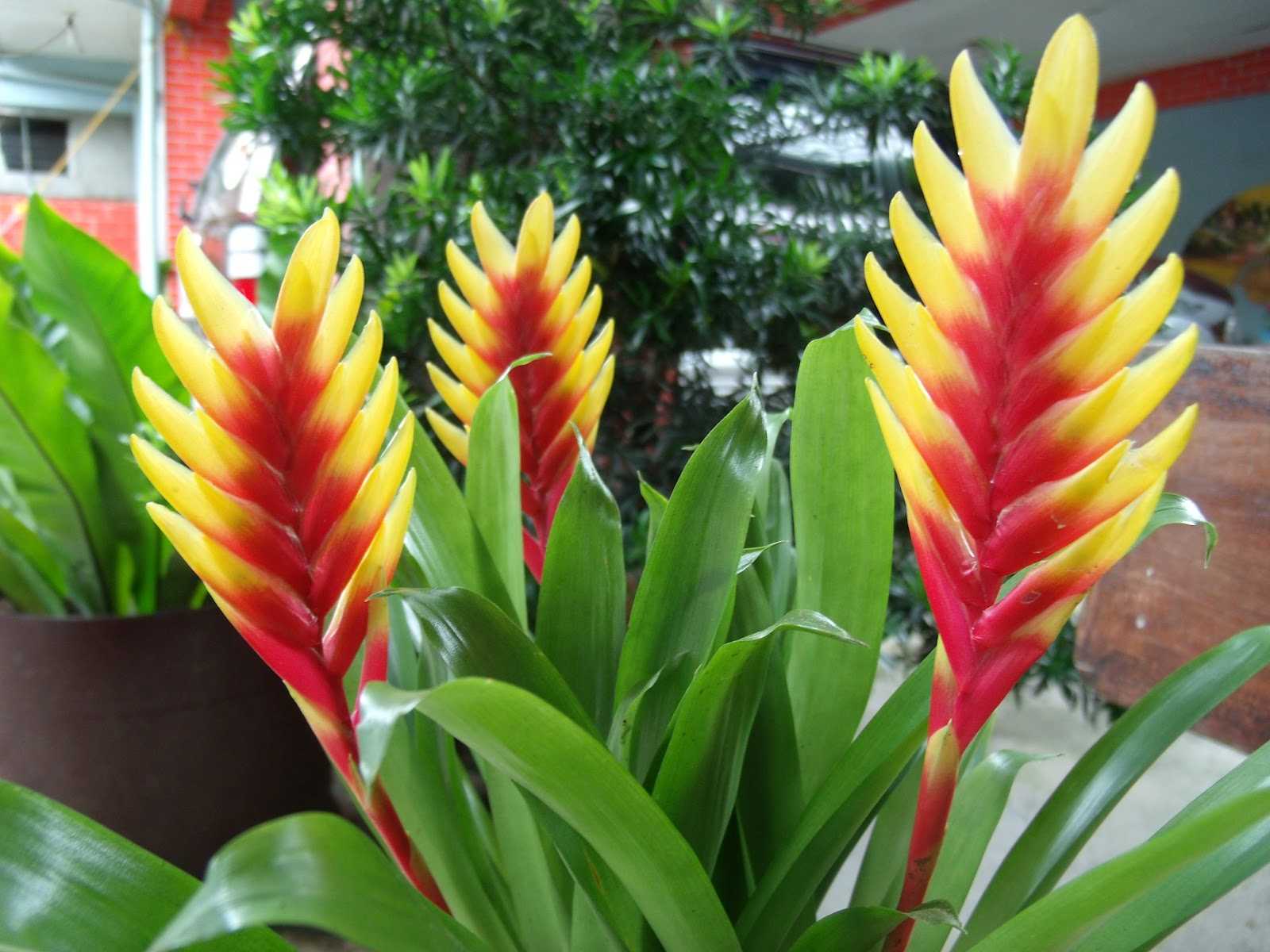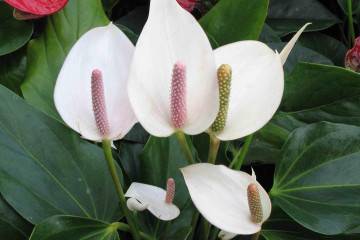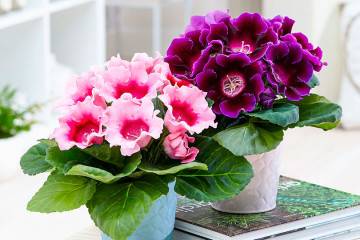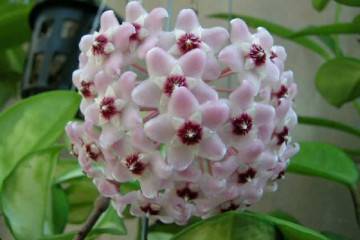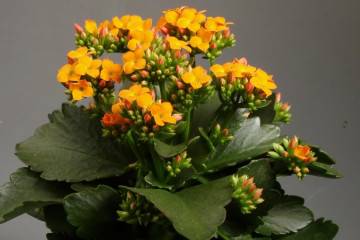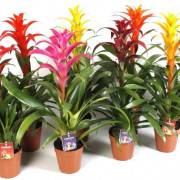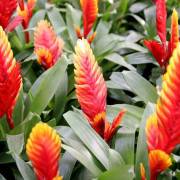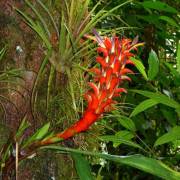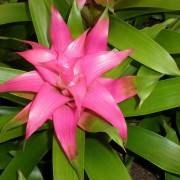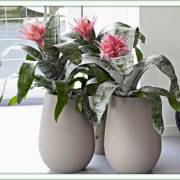Vriezia - home care, how vriezia blooms
Content:
The bromeliad family unites many beautiful plants - guzmania, ehmeya. But the delightful pen of Vriese cannot be compared to any of them. To admire the unearthly beauty of a capricious flower, you need to make a lot of effort.
Description of vriezia
Frizee is another name for Vriezia, guests from South and Central America. The plant bears the name of the Dutch physician and botanist Henrik Vries. Under natural conditions, it grows on rocky soils and rocks, trees in the tropical forests of Argentina and Brazil.
Vriezia is an epiphyte flower, a herbaceous perennial. It lives by attaching itself to other plants or objects. But it does not parasitize on green organisms, but produces its own nutrients, so the roots are underdeveloped. Hence the peculiarities of keeping the frieze at home.
How to care for a vriezia flower at home
Many novice growers would like to grow a vriezia flower, caring for which at home is a long and patient work. But fans of a rare plant in the form of a bright, "flaming sword" are not stopped by difficulties. The most important thing when growing Vriezia is to strictly observe air humidity, room temperature and watering regime.
Lighting
The overseas beauty is light-loving. Sunlight is an important factor for growing Vrieseia. But you should not put the plant under direct rays, since the colorful pattern on the leaves will suffer. The images will fade and become completely invisible. The foliage of the flower is of different shades with dark or light stripes.
In winter, when there is little sun, it is advisable to keep the frieze on the windowsill on the south side; by spring, the plant is more comfortable on the west window. The lighting should be soft but long lasting. It is permissible to arrange semi-shaded conditions for the plant.
Temperature regime
Since the Frisian is a southern inhabitant, she is thermophilic. The overseas beauty is comfortable at temperatures up to +25 degrees in summer, in winter the thermometer should not drop below + 17-20 degrees.
Florists do not recommend placing the plant near heating batteries, since dry air is formed around, which is detrimental to the Frizee. In summer, when the weather is warm, Vriezia is taken out on a loggia or terrace, under a canopy.
Humidity of soil and air
Vriezia is watered regularly, but not overflowing, so that the liquid does not stagnate on the surface of the soil. Before watering, the water is defended for at least 7 hours. The water temperature should be at least + 21-22 degrees. In summer, water from the outlet is collected with a paper towel or napkin 2 times a week. After collecting the old one, fresh water is poured.
In addition, the soil is sprayed, slightly moistening:
- Dried topsoil indicates that it is time to wet the potting soil.
- When it's hot, they spray not only the soil, but also the leaves, sometimes in the morning and in the evening. Dust is also removed from foliage by wiping with a damp towel.
- The tray under the flower pot must be dry, so the remaining water after watering is immediately drained.Do not allow water to stagnate at the roots of the plant.
- In winter, when the thermometer reads at least +20 degrees, water is poured into a leaf outlet for 4-5 hours, then removed. Water it every 7-10 days.
- If the room is cooler, the plant is not watered. Water and cold air cause fungal diseases. It is enough to wipe the leaves with a damp cloth.
The increased air humidity is maintained by filling the pallet with wet expanded clay.
How to transplant a flower
Frizee is not often transplanted, it is enough to do this once every three years. Sometimes the flower grows in one place for up to 5 years, but it is advisable to transplant the plant earlier.
Vriezia transplantation is needed for young plants that have not yet bloomed. The root system is weak, does not play a significant role in the nutrition of the vriezia. For transplantation, they acquire soil for bromeliads or prepare the soil on their own, mixing turf soil with peat and sand, sphagnum moss:
- A drainage layer is poured into the pot with the addition of activated carbon to protect the flower from fungal diseases and root rot.
- A layer of coarse sand is poured, pieces of pine bark are laid.
- From the sides and top, the flower is sprinkled with prepared earth.
Sometimes Vriezia is grown at home in a special way. The roots are carefully wrapped with a strong nylon thread, attached to a branch or stump. Also use small stones, shell rock.
How to divide vriese
After flowering, the plant continues to be looked after as usual. When the babies grow up and become as tall as the mother's flower, it's time to separate them.
It is advisable to separate the children in spring or summer, when it is warm and the daylight hours are long:
- Carefully take out a flower with a clod of earth.
- With a sharply sharpened knife, the processes are separated from the mother's body and placed in previously prepared containers.
- It is impossible to overmoisten the soil so as not to cause rotting of thin roots. It is advisable to spray the soil when its drying is noticeable.
In order for young plants to remain healthy and strong after separation from the mother flower, additional lighting is organized in winter using fluorescent lamps.
The shoots take root for a long time. The room should be warm, at least +23 degrees, the air humidity should be high. Sometimes, after transplanting, young Vriezians are covered with a film, creating a tropical microclimate. So the flowers will quickly get used to the new place of residence, adapt to other conditions.
Correct pruning
The life cycle of a flower is short - no more than 3 years. First, children grow, then vriezia blooms, children reappear. The flower dies off. A peduncle, dry shoots and leaves are cut with a sharp knife. The faded arrow is not cut off if seeds are needed.
Vriezia Splenriet
Splenriet is one of the brightest representatives of epiphytic plants. Naturally, it grows in the southern tropics of America. Lives on trees, high stumps, dead wood. The leaf rosette of a flower is a kind of funnel, a source of plant nutrition.
Description of the plant
The flower is gorgeous. Looks bright, elegant:
- The plant's dark green leaves are in-line, collected in a rosette at the base of the flower. The length of a dense leaf with dark scarlet transverse stripes is 40-42 cm.
- The flowers are bright yellow, as if in a frame of deep red bracts.
- The peduncle, which looks like a bright candle, grows to the meter mark. Not only inflorescences are beautiful, but also leaves.
It is not for nothing that the vriezia Splenriet is a flower that has gained popularity among flower growers. It has become one of the favorite houseplants. When it blooms, it's hard to take your eyes off its splendor. After flowering, the rosette of the mother flower dies off.The life cycle of a plant is continued by children. You do not need to transplant a store-bought flowering plant.
Blossom vriezia Splenriet
The plant blooms in the 4th year of life. The duration of flowering depends on the variety. Flowers - "ears" of Vriezia Splenriet please the eye no more than 7-10 days. In nature, the plant blooms for up to six months.
At home, the plant blooms at any time, more often in winter, so Europeans call flowering New Year's or Christmas.
Care conditions
The exotic beauty Splenriet, or the Shiny one, comes from the tropics. To make the flower comfortable, the room conditions should be close to natural ones: humid indoor air, temperature +26 degrees. The critical minimum indicator is +16; at lower values, the plant will wither.
Low temperature makes it difficult to absorb moisture from the outlet, excess liquid causes root rot. To maintain air humidity in the room, a spray gun is arranged. In this case, you must try to prevent water from getting on the inflorescence.
An indoor flower is fed with a complex fertilizer for bromeliads during the period of peduncle formation. With proper care of Splenriet Vriezia, keeping a plant in the house is not so difficult.
Vriezia Mix
The mix is perfect for growing at home, unlike, for example, Vriezia Era, which cannot adapt to home conditions. This flower grows well only in regions with hot climates.
Description of indoor plant Vriezia Mix
The plant looks like a bouquet of several flowers. It has shiny bright green leaves. The inflorescences spread out in different directions look like separate plants. They have a wide range of shades of scaly bracts, from lemon yellow to deep red.
Vriezia is a unique plant. Growing vriezia and care will become easier if you choose a variety that is suitable for keeping indoors, create conditions close to natural for your favorite flower. With proper care, Vriezia will delight with magnificent flowering.
